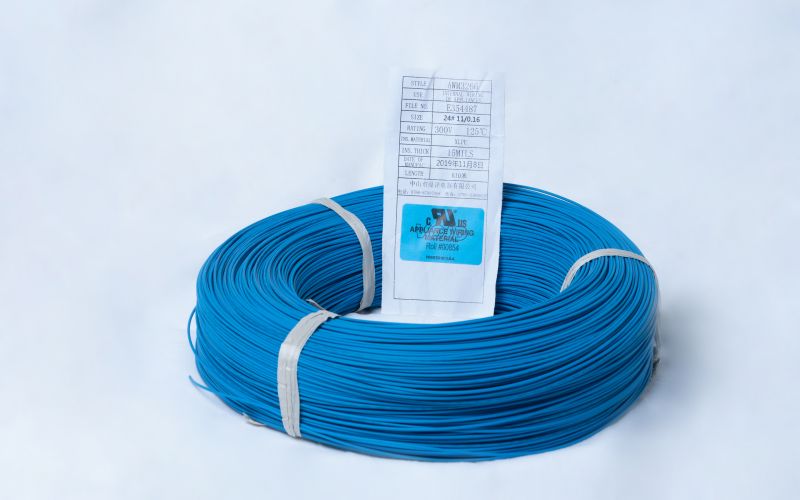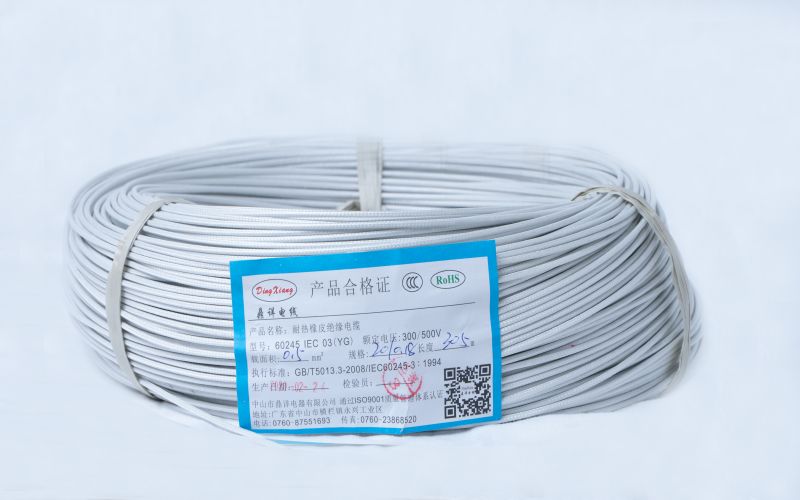UL3122 silicone braided wire is a crucial component in many industries, known for its exceptional heat resistance, flexibility, and durability. Understanding the manufacturing process of this high-performance wire can help businesses and engineers select the right wire for their applications. In this article, we’ll walk through the key steps involved in manufacturing UL3122 silicone braided wire, ensuring you gain a deeper understanding of its construction and qualities.
What Is UL3122 Silicone Braided Wire?
Before diving into the manufacturing process, it's important to understand what UL3122 silicone braided wire is. This type of wire is designed with a silicone rubber insulation that provides protection against high temperatures, extreme weather conditions, and electrical interference. The braided construction enhances the wire’s durability and flexibility, making it suitable for applications in industries like automotive, aerospace, electronics, and medical fields.

Step 1: Preparing the Conductor
The first step in manufacturing UL3122 silicone braided wire is preparing the conductor, typically made of copper or tinned copper. The conductor is essential because it carries the electrical current. In the production process, the copper wire is drawn through a series of dies to achieve the desired gauge, ensuring it meets the specific requirements for electrical performance.
Step 2: Insulating the Conductor with Silicone Rubber
Next, the conductor is coated with silicone rubber insulation. This layer serves as the primary protection against heat, electrical interference, and environmental factors. The silicone rubber is extruded onto the conductor, creating a uniform layer. The insulation is carefully controlled to meet UL3122 standards, ensuring that it provides the necessary resistance to high temperatures and other external stressors.The insulation process is crucial for ensuring that the wire can withstand temperatures ranging from -60°C to +200°C, which is one of the key advantages of UL3122 silicone braided wire. The silicone rubber used in this process also contributes to the wire’s flexibility, allowing it to bend easily without compromising its structural integrity.
Step 3: Adding the Braided Shield
Once the wire is coated with silicone insulation, the next step is to add the braided shield. This shield is typically made of a metal like tinned copper, which is braided around the insulated conductor. The braid provides additional protection against physical damage and external interference, such as electromagnetic fields (EMFs) or radio frequency interference (RFI).The braided shield enhances the wire’s strength, flexibility, and resistance to abrasion, making it ideal for use in harsh environments. It also improves the wire’s longevity, ensuring that it maintains its performance over time. The braiding is done using machines that ensure the braid is uniform and tightly woven for maximum effectiveness.

Step 4: Final Insulation Layer (Optional)
In some cases, a final layer of silicone rubber or another type of insulation may be added over the braided shield. This extra layer provides additional protection against moisture, dust, or other environmental factors. The wire is now fully insulated, shielded, and ready for use in high-temperature or high-performance applications.
Step 5: Quality Control and Testing
Once the wire is fully manufactured, it undergoes rigorous quality control and testing to ensure it meets UL3122 standards. These tests check the wire's electrical conductivity, heat resistance, flexibility, and overall durability. The wire is also tested for its ability to withstand various environmental conditions, including exposure to chemicals, UV rays, and extreme temperatures.The final product is inspected for any defects in insulation, braiding, or overall construction. Only wires that pass these strict quality control tests are sent for packaging and distribution.
Step 6: Packaging and Distribution
After passing the final quality control checks, the UL3122 silicone braided wire is ready for packaging. The wire is coiled or spooled according to customer specifications, ensuring it is easy to handle and install. It is then labeled with the appropriate certification marks and ready for distribution to industries that require this high-performance wire.
Why Choose UL3122 Silicone Braided Wire?
UL3122 silicone braided wire is an excellent choice for applications that require flexibility, high heat resistance, and durability. Its manufacturing process ensures that it provides superior protection against environmental factors, electrical interference, and physical stress. This makes it a top choice for industries such as:
Automotive: For wiring in high-temperature environments, such as engine bays.
Aerospace: To handle extreme temperatures and harsh conditions in flight.
Electronics: For circuits and systems requiring stable and reliable performance.
Medical Devices: For reliable wiring in critical medical equipment.
The manufacturing process of UL3122 silicone braided wire combines high-quality materials, advanced technology, and precise techniques to produce a product that meets demanding industry standards. From the preparation of the conductor to the final packaging, each step ensures that the wire performs reliably in high-temperature, high-performance, and harsh environments. Whether you're looking for wire for automotive, aerospace, or medical applications, UL3122 silicone braided wire is a trusted choice that delivers exceptional durability and flexibility.


